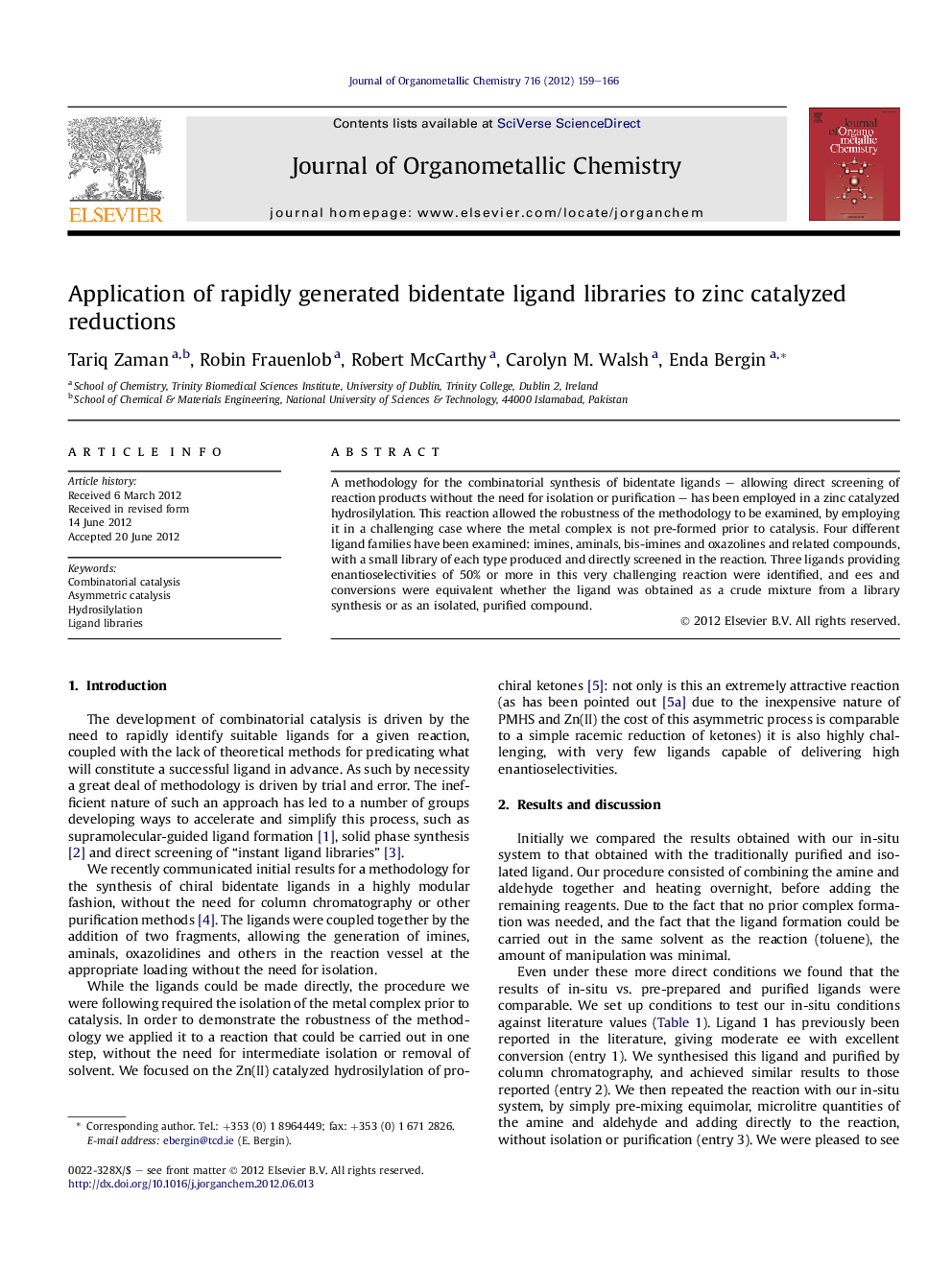| کد مقاله | کد نشریه | سال انتشار | مقاله انگلیسی | نسخه تمام متن |
|---|---|---|---|---|
| 1324733 | 1499921 | 2012 | 8 صفحه PDF | دانلود رایگان |

A methodology for the combinatorial synthesis of bidentate ligands – allowing direct screening of reaction products without the need for isolation or purification – has been employed in a zinc catalyzed hydrosilylation. This reaction allowed the robustness of the methodology to be examined, by employing it in a challenging case where the metal complex is not pre-formed prior to catalysis. Four different ligand families have been examined: imines, aminals, bis-imines and oxazolines and related compounds, with a small library of each type produced and directly screened in the reaction. Three ligands providing enantioselectivities of 50% or more in this very challenging reaction were identified, and ees and conversions were equivalent whether the ligand was obtained as a crude mixture from a library synthesis or as an isolated, purified compound.
Parallel synthesis of bidentate chiral ligands was carried out, and employed to zinc-catalyzed hydrosilylations without any purification and with minimal manipulation. Results were consistent with traditionally formed ligands.Figure optionsDownload as PowerPoint slideHighlights
► Rapid ligand library synthesis.
► Direct addition of crude library members to reaction medium.
► Comparable results between in-situ ligand generation/screening and traditional catalysts preparation.
Journal: Journal of Organometallic Chemistry - Volume 716, 1 October 2012, Pages 159–166